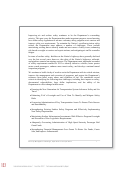Performance And Accountability Report - Fiscal Year 2013 - Federal Aviation Administration - U.s. Department Of Transportation Page 67
ADVERTISEMENT
 1
1  2
2  3
3  4
4  5
5  6
6  7
7  8
8  9
9  10
10  11
11  12
12  13
13  14
14  15
15  16
16  17
17  18
18  19
19  20
20  21
21  22
22  23
23  24
24  25
25  26
26  27
27  28
28  29
29  30
30  31
31  32
32  33
33  34
34  35
35  36
36  37
37  38
38  39
39  40
40  41
41  42
42  43
43  44
44  45
45  46
46  47
47  48
48  49
49  50
50  51
51  52
52  53
53  54
54  55
55  56
56  57
57  58
58  59
59  60
60  61
61  62
62  63
63  64
64  65
65  66
66  67
67  68
68  69
69  70
70  71
71  72
72  73
73  74
74  75
75  76
76  77
77  78
78  79
79  80
80  81
81  82
82  83
83  84
84  85
85  86
86  87
87  88
88  89
89  90
90  91
91  92
92  93
93  94
94  95
95  96
96  97
97  98
98  99
99  100
100  101
101  102
102  103
103  104
104  105
105  106
106  107
107  108
108  109
109  110
110  111
111  112
112  113
113  114
114  115
115  116
116  117
117  118
118  119
119  120
120  121
121  122
122  123
123  124
124  125
125  126
126  127
127  128
128  129
129  130
130  131
131  132
132  133
133  134
134  135
135  136
136  137
137  138
138  139
139  140
140  141
141  142
142  143
143  144
144  145
145  146
146  147
147  148
148  149
149  150
150 system’s energy efficiency. Air traffic modernization is reducing
Advances in the development of sustainable alternative fuels
delays and enabling more direct routes, thus saving fuel.
also offer great promise for emissions reduction. Nearly 100
percent of the fuel used in aviation operations is petroleum-
In addition, the FAA’s Continuous Lower Energy, Emissions
based, raising issues of energy supply, energy security, and
and Noise (CLEEN) program is accelerating the development
the effect of fossil fuel emissions on our air quality and
of energy-efficient technologies. These will be deployed to
climate. In response to these multiple concerns, government
the commercial fleet sooner than normal market forces would
and the aviation industry have a strong interest in alternative
allow. The program aims to introduce CLEEN technologies into
aviation fuels that can be blended with or replace petroleum
production aircraft in the 2015-2017 timeframe.
jet fuel without changes to existing engines, aircraft, ground
infrastructure, or supply equipment.
THE FAA INTENSIFIES ITS STUDY OF ALTERNATIVE FUELS
The FAA intensified its study of less polluting aircraft fuel in
environmental and energy goals of NextGen. Headquartered in
FY 2013. Once developed, alternative fuels will reduce airplane
Richland, WA, the COE will focus on developing drop-in biofuels
that meet industry standards and are cost-competitive with
carbon emissions and make aviation more economically and
environmentally sustainable.
petroleum-based fuels. The FAA’s COE programs are cost-sharing
research partnerships between academia, industry, and the
•
As part of NextGen’s CLEEN program, the FAA is conducting rig
federal government.
and engine tests of promising alternatives to petroleum-based jet
fuels. The goal is to develop “drop-in” alternative jet fuels that
can be used in existing aircraft, without requiring installation of
new engines or creation of new airplane types.
•
The General Aviation (GA) community is also searching for an
environmentally-friendly fuel alternative. Most of the community
runs on avgas (aviation gasoline), an anti-knock mixture whose
lead content has raised public health concerns. The FAA’s Fuels
Program Office, created in 2012, is working with the agency’s
William J. Hughes Technical Center and industry partners on
developing a high-quality, lead-free alternative GA fuel.
•
In February 2013, the FAA and the Spanish Aviation Safety and
Security Agency (AESA) signed a Declaration of Cooperation to
promote the development and use of sustainable alternative
aviation fuels in the United States and Spain. The declaration,
like others that the United States has signed with Australia, Brazil,
and Germany, enables the FAA’s Office of Environment and Energy
to explore cooperation in areas such as research on the life-cycle
effects of alternative fuel emissions on the atmosphere and best
practices on alternative jet fuel testing and approvals.
•
In April 2013, the U.S. Department of Agriculture extended for five
years its “Farm to Fly” agreement to work with the FAA and other
partners to develop biofuel from renewable feedstocks. This will
create jobs and economic opportunity from the farm to the airport
and lessen America’s reliance on foreign oil. The goal: production
of one billion gallons of drop-in aviation biofuel by 2018.
•
In September 2013, the FAA announced formation of its newest
center of excellence (COE), devoted to researching the effects of
Aviation Fuel and Engine Test Facility for the Lycoming Piston Engine.
alternative jet fuels on the environment, as part of meeting the
Photo: FAA.
65
|
|
Federal Aviation Administration
Fiscal Year 2013
Performance and Accountability Report
ADVERTISEMENT
0 votes
Related Articles
Related forms
Related Categories
Parent category: Business









